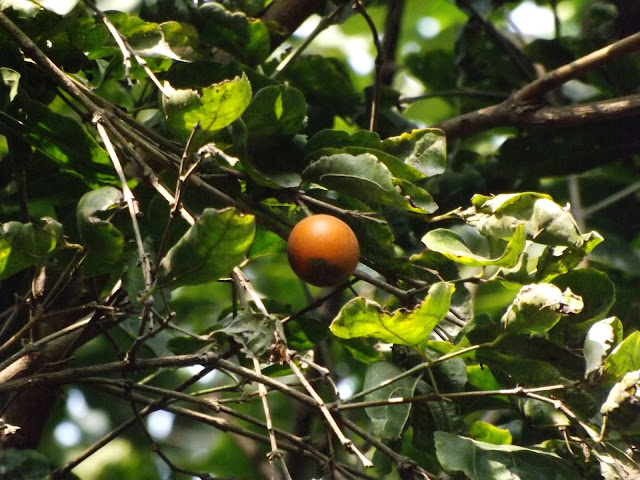Kuchila or Nux-vomica, Strychnos nux-vomica

Kuchila or Nux-vomica ( Strychnos nux-vomica , family: Loganiaceae) is a medium-sized evergreen tree with profuse branches, attaining a height of 15 m. Bark is grey, smooth and thin. Branchlets are arranged oppositely. It is mainly found in Sylhet and Chattogram Hill Tracts in Bangladesh. In addition, it can be found scattered all over the country. Other names: Vomiting nut, Strychnine tree, Poison nut tree, Snake wood. Leaves are elliptic, small, 5-8 cm long, short-petioled, opposite; veins 5, clearly visible. Flowers are small, tubular, 1-1.5 cm long, greenish white, on umbel inflorescence, bad smelling. The bisexual flowers bloom in spring. Fruit is globose, 4-5 cm in diameter, orange-colored, tastes bittter. The outer shell of the fruit is quite hard, pulp white and soft. Seeds 2-8, poisonous; flat, button-like, hard, whitish grey, hairy. The fruits hang on the tree for a long time. These ripen mainly in winter. The plant is propagated by seeds. A homeopathic medicine called






